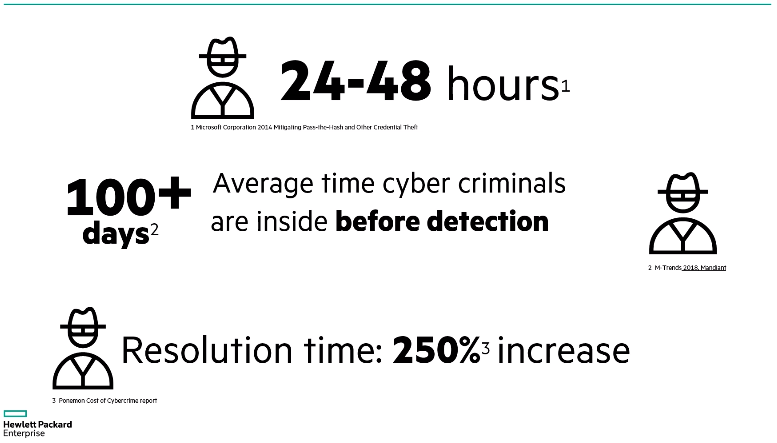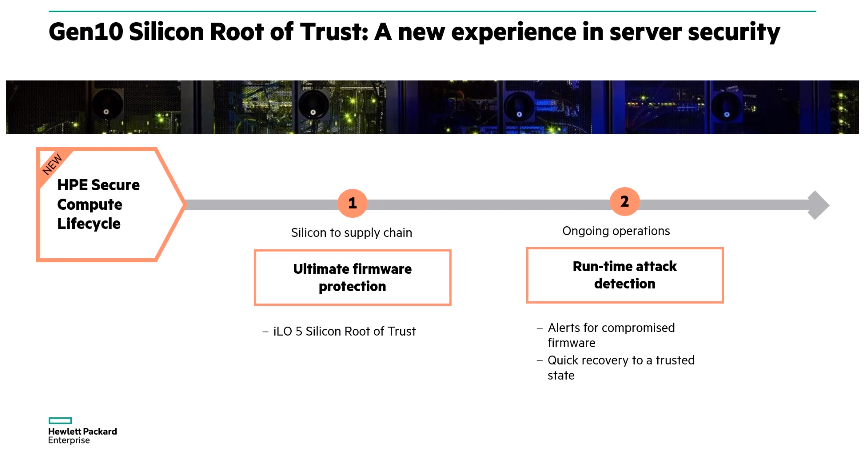Microsoft has removed this video, but you may read our transcript below.
Video Transcript
Here’s the first compelling reason to upgrade before support ends for Windows Server 2008.
The numbers on cybercrime are scary and they keep getting worse.

Typically, a hacker can get into a data center in 24 to 48 hours and it’s typically more than a hundred days before the organization knows they’ve been breached at all and the time it takes to resolve a breach has gone up 250 percent since 2010.
The current versions of Windows Server software have protection that just wasn’t available in 2008.
Credential Guard can protect you against a hacker stealing passwords to break into your data center.
With Device Guard, you can keep people from loading malware could either cause damage or enable them to steal data and if somebody does manage to get in you can detect them much quicker plus you can figure out how they got in to keep that from happening again.
These are ways to protect yourself that didn’t exist with Windows Server 2008.
Gen 10 servers from HPE provide additional protection as well.

When the system is manufactured, the digital fingerprint is created that matches the firmware in the system. At boot time, this digital fingerprint is verified and if the firmware doesn’t match in the system, won’t boot.
In addition, the system can be set up to regularly check to make sure that digital fingerprint matches the firmware, and if any changes taking place, fireworks go off.
But the protection isn’t limited to firm work. There’s encryption throughout the system.
HPE is the only volume server vendor to comply with the most stringent guidelines for encryption – both from the commercial market and the U.S. federal government.
This level of protection didn’t exist for many of these legacy servers were manufactured.
So if you’re running 2008 you’re on a system with a lot less protection than you can get today.
How can Shoreline Technology Solutions help upgrade my Windows Server 2008?
When it comes to upgrading Windows Server 2008, our techs can help your business assess, migrate, and optimize your upgrade.
- Assess – Identify and inventory your apps and server roles running on Windows Server 2008 and 2008 R2. Analyze each workload to determine the best path—migrate to Azure or upgrade on-premises.
- Migrate – Make the move—migrate your virtual machines to Azure or upgrade to the latest version of Windows Server.
- Optimize – Fine-tune your resources to optimize costs, manage resources, and strengthen security and compliance across hybrid workloads.
Contact us today to learn how our small business server 2008 modernization paths can help protect your business.

President / Network Architect
Mark Kolean always had a fascination with technology from the time he was 3 and his gift of the Atari 2600 to current. In 1990 at the age of 14 Mark got his first job in customer support for a mail order business supporting Tandy TSR-80 computer software shipped on cassette tape. A few years later Mark was building hundreds of 286, 386, and 486 computers for the new emerging DOS & Windows 3.1 computers that had exploded on the market.
After a college career studying business and technology Mark Started Shoreline Computer Systems in 1999 at the height of the dot.com boom with the looming crisis of the year2k bug just around the corner. In the early 2000’s a lot of work was done with early network systems including Lantastic, Novell, and Windows NT Server. Mark became a community contributor to the Small Business Specialist community that revolved around Small Business Server 2000-2011 which focused on single or dual server environments for businesses up to 50 in size. Networks during this time frame mostly had a break fix relationship in which work was billed only when a problem occurred.
In the 2010’s Microsoft released their first cloud based software called Microsoft BPOS which would in later become known as Microsoft Office 365. This introduced a new model in technology with pay as you go subscription services. Starting in 2013 Mark’s team at Shoreline Computer System rebranded as Shoreline Technology Solutions to focus on the transition to become proactive and less reactive to data backup and security needs. Starting in 2018 all customers are required to have a backup management plan in place as a center point with the full understanding that if STS isn’t watching the customer’s data, then no one is.
Now in Mark’s 22 years of business he is building a company emphasis of how to help customers retire servers and build networks completely in the cloud.


Leave a Reply
You must be logged in to post a comment.